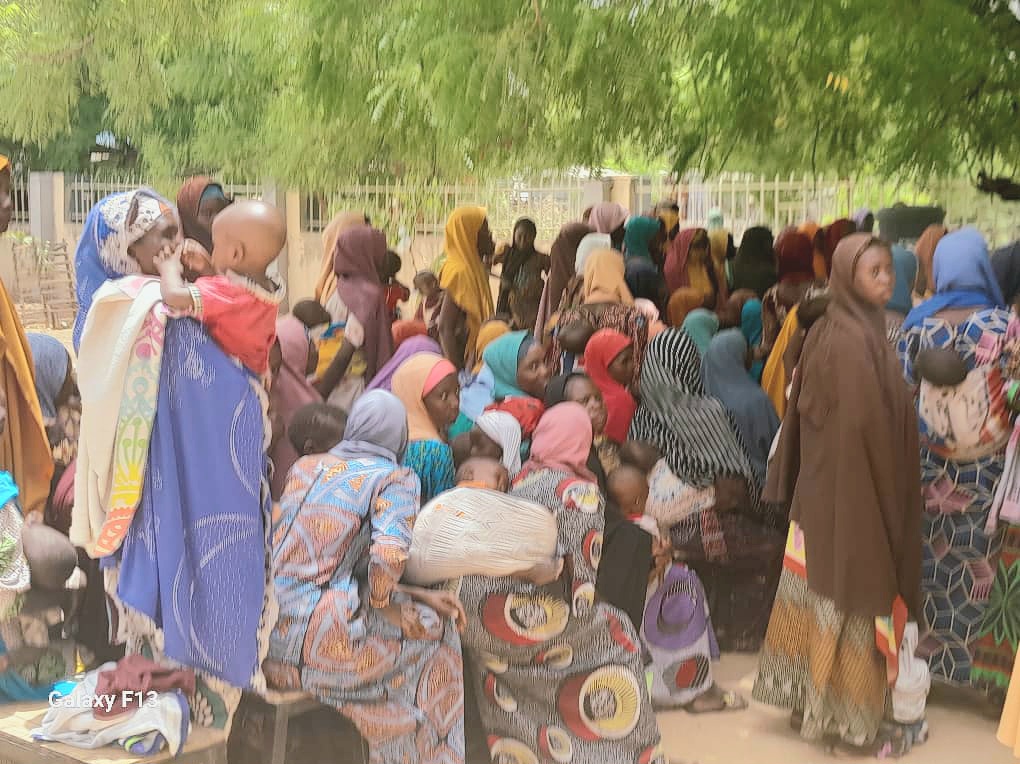By: Babagana Bukar Wakil, Maiduguri
Child birth spacing gives both the nursing mother and the child a sound health and protection.
Optimal child spacing promotes child survival through having: More time to breastfeed and care for your child. More resources for child care because of the interval between children e.g. you will have less school fees to pay, less clothes to buy, less food to buy, etc.
Birth spacing reduces the mortality rate of infants and mothers. For example, in Mali, a child born less than 2 years after his sibling is 2.5 times more likely to die before age 1 than a child born 2-3 years after his sibling. The mortality risk increases to 4 times when compared to a four-year birth interval.
Our reporter visit a primary healthcare clinic, 777 Housing Estate outskirt Maiduguri where the head of the unit, child birth spacing Shehuram Shetima disclosed that 20 to 30 women pays visit to the unit every working day for adopting child spacing Methods, counseling and reconciliation between spouses, changing methods among others. Shehuram Shetima added that the number of women accepting and embracing birth spacing increasingly be coming higher compare to previous years due to so many factors.
The head of the unit further explained the available methods of child birth spacing for men and women folk, where she categorised them into deferent pill methods , Injections, Implants, use of male and female condoms, withdrawal methods amongst others.
According to her the unit is receiving medical sonsumebles, injections and that of insertion from the Borno state primary Health care development Agency, United Nation through the facilitation of The Challenge Innitistive a non governmental Organisation and other development partners.
On the provision of the medical consumebles and injections to the needing and accepting beneficiaries she said they’re given it free of charge of they have teken a new delivery where its not available the adopting beneficiaries have to pay for it, she added.
Several young wives expressed mixed reactions for unknowingly, or through the attitude of their spouses or husband unpreferably become a mother of two to three children in les three or two years which is according to some of them have described the situation as most dangerous and life threatening adventure.
Hadiza Abdurahamane, 22 years old mother of two baby girls from Kulollori area outskirt of Maiduguri said, she is not strong and healthy. One of her child Fatima is 14 month old while tje other one is 5 month old. Stressing that her husband still trying her to get another round of Pregancy despite her appeals to venture into child Spacing Strategies, however, her husband refused go for traditional methods of child birth spacing but we’re both advises to approach the clinic for counseling. At the time of this report the husband was not in the unit bit the wive and the two baby girls were there and have received advise and pills for three months. The head of the unit advise her to use the pill carefully and should exceed the period of three month with even a day.
Another young mother who is Fatima Hassan, 24 years old said they have reached consensus with her husband to go for the best child birth Spacing Methods because she has medically suffered during her first and second Pregancy. She delivered through CS, and they have spent alot of money settling medical bills before she was stabilised.
Mrs Hasan further revealed economic factors is regarded as one of the serious threat causing them accepting the child birth spacing now a days looking at the economic situation of the country together with the activities of Boko Haram Terrorists and ISWAP.
According to UNICEF by spacing births at least 36 months apart, families can reduce the number of young dependents and better provide children with the care and resources they deserve.
For many years, studies demonstrated that when mothers space births at least 2 years apart, their children are more likely to survive and to be healthy. Infants spaced at least 2 years apart are also less likely to be premature, of low birth weight, and to be malnourished (4, 6, 8).
Children born after a birth interval of 9-12 months have a higher probability of low birth weight, preterm birth, and infant mortality both with and without sibling comparisons; longer intervals are further protective, but to a much less dramatic extent, and the protective effect of longer intervals against low birth . Based on this body of research, a recent study concluded that the optimal length between pregnancies for the best health outcomes may be 18 to 23 months, which means your children would be 27 to 32 months apart in age.
According to the head of the clinic Shetima Shehuram Young infants need areas with enough room to practice their growing abilities and movements, such as rolling and crawling. Mobile infants and toddlers need space as they explore and learn to crawl, walk, dance, jump, and build.
2 to 4 Years Apart. Some parents say that spacing kids apart by 2 to 4 years is the sweet spot, and there are definitely some great pros to this timeline like having more time with each child, 5 Years Apart or More. For some families, spacing children by five or more years sounds perfect.




